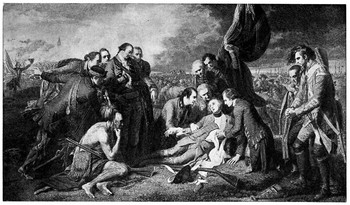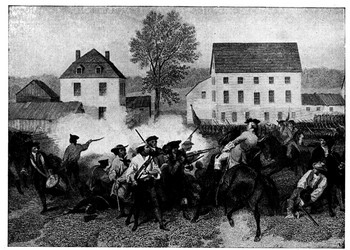Part 4: Victory and Lessons Learned
His commanding officer, Jeffery Amherst, continued to press the attack, sailing down the St. Lawrence River to attack Montreal, the last French stronghold, in 1760. The result was another British victory. On September 8, the French surrendered Montreal. Scattered fighting continued throughout Canada for the next few years, but the war was basically over. The Treaty of Paris was signed in 1763, and France gave up all claims to Canada. To finance the war, England had gone into debt. Since the war was fought mainly to protect the borders of the American colonies, the English government decided to make the Americans pay for most of that debt. This, naturally, created great unrest in America.
First page > The Colonies in America > Page 1, 2, 3, 4 |
|
Social Studies for Kids
copyright 2002–2024
David White

 The
Battle of
The
Battle of  The
French and Indian War, as Americans called it, showed the
American colonists how powerful the English army and navy
could be. It also showed how vulnerable these same troops
could be. The Americans noticed the effectiveness of the
guerrilla tactics used by the French and Native Americans.
When the British
The
French and Indian War, as Americans called it, showed the
American colonists how powerful the English army and navy
could be. It also showed how vulnerable these same troops
could be. The Americans noticed the effectiveness of the
guerrilla tactics used by the French and Native Americans.
When the British 
